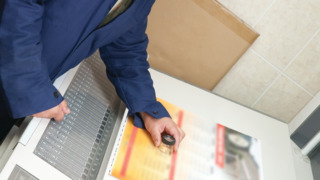Pricing Methods to Make Money in Prepress
It is a question I ask printers at the beginning of each new year. Have you raised your prices for design and typesetting services?

It is a question I ask printers at the beginning of each new year. Have you raised your prices for design and typesetting services? You have a big investment in people, hardware and software so you must be sure you’re covering your costs for that department and making money.
Too many printers haven’t looked at their typesetting and design pricing in a while. You may not have had a reason to think about what you are charging in the prepress department, but you could be leaving money on the table. Just because your hourly rate for prepress is higher than your designer’s hourly wage doesn’t mean you are making money.
Are you really charging the hourly rate you say you charge? Don’t blame the prepress staff if the sales for their department makes it look like they sit around most of the day. Designers have little input into the selling prices in most shops. Management must constantly monitor the selling prices for the prepress work to assure the selling price is profitable. This means monitoring the sales produced by the department daily and allowing the prepress department to give feedback to the sales staff about the prices they are charging. Too often, the prepress staff is working very hard, but the sales staff is giving away their services as a loss leader.
Here are pricing methods profitable printers use to make money in the prepress department.
- Charge differently for typesetting setting and design. While it might look the same to the untrained eye, the value added by the designer to a printed piece makes it worth a higher selling price. Typesetting replicates something for a buyer. A designer communicates the customer’s message and ideas through typography, color, images, color and form. When you are providing designing services, you are providing a unique product that has a higher value than just the time it took to “type” it.
- Charge for author alterations (AAs). AAs should not to be confused with correcting printer’s errors (PEs) made by the typesetter. AAs are text or design changes that the author makes to their original supplied materials or their original request. A simple request to change text can result in a new line ending that requires several pages to be redesign. Don’t let a customer make changes or redesign the project over and over without being compensated. Some AAs could even require the designer to start over and increase the costs. When the customer changes the specs, you must change the price.
- Apply a minimum charge for handling customer-created files. Successful printers will charge at least 30 minutes of their hourly typesetting rate to preflight and fix customer-created files to assure the file will print properly. If the file requires more than 30 minutes to correct, more charges are added. It is incorrect to assume that customers know how to create a file that will print properly on your equipment. You can automate several preflight steps with specialized software, but you must make sure your charging enough to pay for the software tools.
- Have the production manager monitor the prepress department charges daily to ensure all additional charges are billed to the customer. The production manager is the choke point between order entry staff and the prepress staff. It is the production manager’s job to make sure the department isn’t losing money. If the PM believes the price is too low, the order must be sent back to the order entry staff and the price corrected. Looking at the total dollars generated in prepress each day will help the department keep from being a money loser.
When management focuses on typesetting and design selling prices, prepress sales go up. The additional funds will allow you to pay the prepress staff more and keep the software and equipment updated. Proper pricing will also contribute to the customer’s perception of your company’s credibility and quality. Price it low and the customer won’t appreciate the value of your work. Implementing the right pricing practices can make 2019 the year your prepress department stops being the black hole for profits.
Got a question? John Giles is a consultant for the printing industry who welcomes calls and questions from readers. John works with Tom Crouser and CPrint International to help printers prosper. They are currently accepting new clients. He is the author of The DTP PriceList that is included in the 2018 Crouser Pricing Guide found at www.cprint.com. If you have questions about making your printing company more profitable, feel free to call or write John at 954-224-1942, [email protected] or [email protected].
